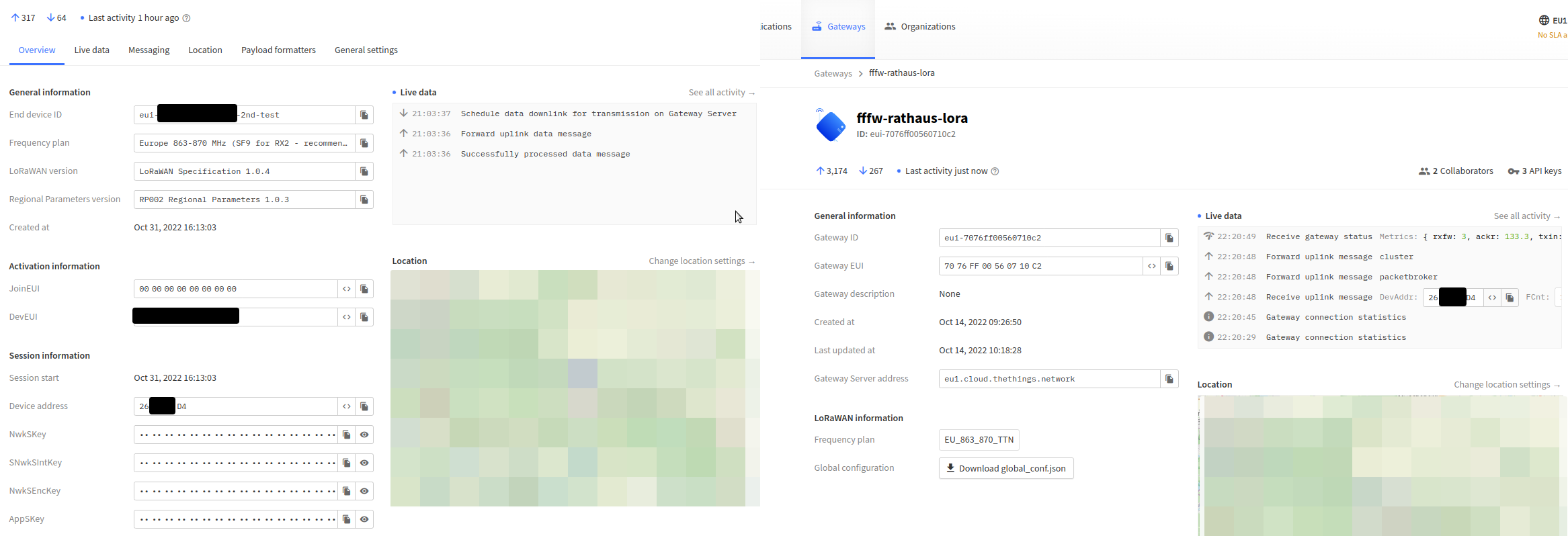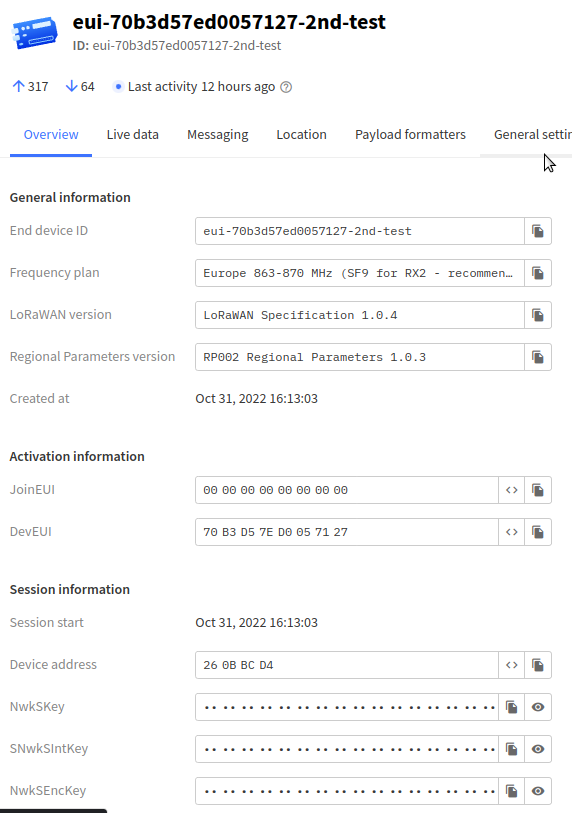If you know, why do it? TTN is a community network that also shares the airwaves with other ISM users. And you are likely in breach of duty cycle which is a prosecutable offence. Hopefully you will give us the confidence that you have reduced your send rate.
Thanks for focusing on a test detail. My realization was yesterday, after about 5 minutes there was suddenly something on the app page. If it (GW) doesn’t work, we’d have to take it out of the town hall again, and nobody around here can benefit from the GW. That would be a pity, but I can’t tell anyone everything is going well if it isn’t. we do Freifunk in our city and maybe LORAWAN as an addition. However, since I switch off the transmitter after a few minutes, I am completely in fair use, especially since it is useful for building the infrastructure.
You are experiencing the LoRaWAN replay attack protection mechanism. Switch to OTAA to get rid of it or read up on frame counters and their use.
The first possible answer to my question. Looks better now.
“better” OTAA: try to join…
ttyACM log
13:50:42.868 → Starting
13:50:42.901 → RXMODE_RSSI
13:50:42.901 → 169: engineUpdate, opmode=0x8
13:50:42.934 → Packet queued
13:50:42.967 → 212: EV_JOINING
13:50:42.967 → 1176: engineUpdate, opmode=0xc
13:50:49.952 → 440777: engineUpdate, opmode=0xc
13:50:49.985 → 441106: TXMODE, freq=868500000, len=23, SF=7, BW=125, CR=4/5, IH=0
13:50:54.883 → 747588: RXMODE_SINGLE, freq=868500000, SF=7, BW=125, CR=4/5, IH=0, rxsyms=255
13:50:55.148 → 763109: JaccRX1, dataLen=0
13:50:55.181 → 763174: RXMODE_SINGLE, freq=869525000, SF=12, BW=125, CR=4/5, IH=0, rxsyms=255
13:51:03.489 → 1282951: JaccRX2, dataLen=0
13:51:03.522 → 1282986: engineUpdate, opmode=0xc
lib: GitHub - dragino/arduino-lmic: LoraWAN-in-C library, adapted to run under the Arduino environment
GW is ~600m/2000ft away.
Let’s start again, what do you think you need?


